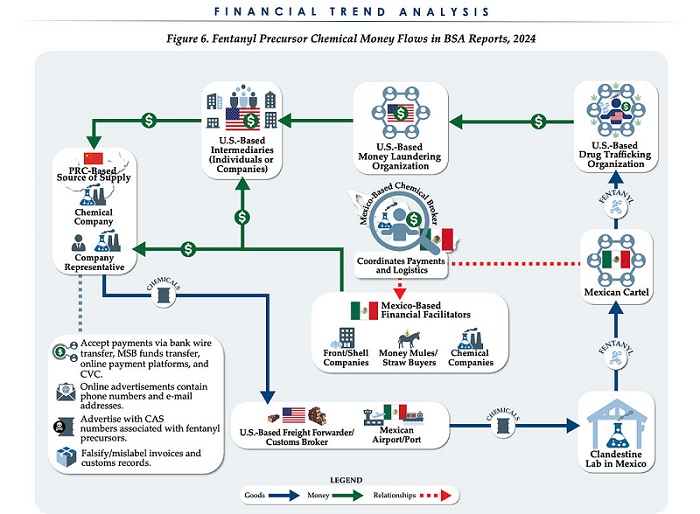Also Interesting
How Online Casino Bonuses Work

A casino bonus is a promotional offer that casinos give to their players. The rewards are used to attract new players and keep existing players coming back to the casino. In the past, many casinos required players to deposit money to receive a bonus. However, many casinos now offer no deposit bonuses, allowing players to start playing without putting any money down.
Also, note that the bonuses have lured many players only to discover that the wagering requirements were too high or the games were not to their liking. So it is always advisable to read the terms and conditions carefully before opting for a casino bonus.
The Different Types of Casino Bonuses Available
There are many different types of casino bonuses available. Below are some of the common types of bonuses that you will find at online casinos:
Welcome Bonus: When they make their first deposit, a welcome bonus is given to new players. The prize is usually a percentage of the deposit amount and can be used to play any casino game.
No Deposit Bonus: A no deposit bonus is given to players without them having to make a deposit. The bonus can be used to play any casino game.
Free Spins Bonus: A free spins bonus is given to players when they sign up for an account at an online casino. The bonus can be used to play any casino game.
Reload Bonus: A reload bonus is given to players who make a second deposit at an online casino. The bonus is usually a percentage of the deposit amount and can be used to play any casino game.
High Roller Bonus: A high roller bonus is given to players who make a large deposit at an online casino. The bonus is usually a percentage of the deposit amount and can be used to play any casino game.
Casino Bonus Codes: Casino bonus codes are used to redeem bonuses at online casinos. The code is entered when making a deposit or registering for an account.
How to Claim Your Casino Bonus
Claiming your casino bonuses Canada will vary depending on the casino you are playing at. Some casinos will require you to enter a bonus code when making a deposit or to register for an account. Others will credit your account automatically after you make a deposit.
Once your bonus has been credited to your account, you can use it to play any casino game. However, there may be wagering requirements attached to the prize. This means you will have to play through the bonus a certain number of times before you can withdraw any winnings.
Other casinos will allow you to withdraw your winnings without meeting any wagering requirements. These are rare, but they do exist. Be sure to read the terms and conditions of your bonus before claiming it. This will ensure that you understand all the requirements and can take full advantage of the prize.
Wagering Requirements
All casino bonuses come with terms and conditions that must be met before you can withdraw your winnings. The most important of these is the wagering requirement.
The wagering requirement is the amount of money you must bet before withdrawing your winnings. The lower the wagering requirement, the better. Bonuses also come with other terms and conditions, such as a maximum withdrawal limit. Be sure to read the terms and conditions before claiming your bonus.
Some tips on how to clear wagering requirements quickly:
Play low variance games: These games have a low house edge and give you a better chance of winning. Examples of low variance games include blackjack and roulette.
Bet the minimum amount: this will help you clear the wagering requirements quickly without risking too much of your own money.
Use a bonus: if you choose between two bonuses, always select the one with the lower wagering requirements.
Play at a reputable casino: only play at casinos that are known for being fair and reliable. This will help you avoid any problems when withdrawing your winnings.
Common Casino Bonus Terms and Conditions
Casino bonuses come with a variety of terms and conditions. Be sure to read the terms and conditions before claiming your bonus.
Here are some of the most common terms and conditions that you will encounter:
Wagering Requirements: The wagering requirement is the amount of money you must bet before withdrawing your winnings. The lower the wagering requirement, the better.
Maximum Withdrawal Limit: Some bonuses come with a maximum withdrawal limit. This means you can only withdraw a certain amount from your winnings.
Bonus Expires: All bonuses have an expiration date. Be sure to check the expiration date before claiming your bonus.
Eligible Games: Not all casino games are suitable for bonuses. Check the terms and conditions to see which games are eligible.
Minimum Deposit: Some bonuses require a minimum deposit. Be sure to check the terms and conditions before making your deposit.
Tips for Using Casino Bonuses to Your Advantage
There are a few things that you can do to take advantage of casino bonuses:
Shop around for the best bonuses. Many different types of bonuses are available, so be sure to find one that suits your needs.
Read the terms and conditions carefully. Be sure to understand the wagering requirements and other terms and conditions before claiming your bonus.
Make a small deposit. Some bonuses require you to deposit them before you can claim them. You can still get the compensation and try out the casino by making a small deposit without risking too much money.
Withdraw your winnings as soon as you meet the wagering requirements. Once you have completed the wagering requirements, you can withdraw your winnings. Take advantage of this and cash out your winnings as soon as possible.
By following these tips, you can use casino bonuses to your advantage and maximize your chances of winning.
In Conclusion
Casino bonuses are a great way to boost your bankroll and give yourself a better chance of winning. However, it is essential to read the terms and conditions before claiming your bonus. By understanding the wagering requirements and other terms and conditions, you can ensure that you take full advantage of your bonus.
Also Interesting
BetFury Review: Is It the Best Crypto Casino?

In today’s competitive online casino market, BetFury emerges as an innovative platform that seamlessly blends cryptocurrency integration with classic gaming excitement. The platform has attracted both casual players and experienced gamblers with its engaging user experience, wide range of games, and attractive rewards that keep users coming back. BetFury’s sleek design and robust technical foundation ensure fast, secure, and entertaining gameplay. Visit https://betfury.com to explore its offerings and learn more about its unique features.
This review examines BetFury in detail, highlighting its key strengths, benefits, and the data that underpins its success. The platform’s commitment to transparency and fairness – enabled by advanced blockchain technology – sets it apart. Regular updates and a strong focus on user satisfaction have earned BetFury a loyal community and a reputation for excellence. In this comprehensive review, we provide clear insights supported by data and genuine user feedback to explain why BetFury is rapidly becoming a top choice in the online gaming world.
Platform Overview
BetFury is a next-generation online casino that merges traditional gambling with modern blockchain technology. Operating on a decentralized system, it guarantees fairness and security for every game and transaction. The user-friendly interface caters to both newcomers and seasoned players. With support for multiple cryptocurrencies, BetFury offers flexibility and convenience to a global audience. Its transparent operational framework provides clear details about game mechanics and bonus structures.
Continuous improvements and a solid technological foundation ensure that the platform remains reliable and innovative. This steady evolution reinforces trust among users and demonstrates BetFury’s commitment to quality. Its ability to adapt quickly to emerging trends makes it a
trailblazer in online gaming.
Key Features and Advantages
BetFury offers an impressive array of features designed to cater to diverse gaming preferences. A vast selection of games is one of its core strengths. Whether you prefer classic slots or immersive live dealer experiences, BetFury delivers. The platform is optimized for both desktop and mobile devices, ensuring smooth gameplay regardless of your setup. Key advantages include:
● Fast transaction speeds
● Transparent gaming mechanics
● Generous bonus structures
● A diverse game portfolio
● Multi-cryptocurrency support
The table below summarizes essential performance metrics:
Metric Value
Average Transaction Time 2 seconds
Game Variety 10k+ titles
Daily Active Users 15k+
Supported Cryptocurrencies 10+
These features combine to create a superior gaming environment that meets modern demands with high security and fairness.
Game Selection and Diversity

The game selection at BetFury is both extensive and varied. Hosting over 10000 titles, the platform offers slots, table games, and live dealer options. Each game is designed for immersive entertainment and reliable performance. Collaboration with top-tier developers ensures high-quality graphics and sound. The variety allows players to enjoy familiar favorites and explore new experiences. Seasonal tournaments and special events add extra excitement and bonus opportunities. The breakdown of game categories is as follows:
Game Category Number of Titles
Slots 9095+
Table Games 290+
Live Dealer 1055+
Specialty Games 30+
Regular updates and a robust performance record reinforce BetFury’s commitment to delivering an engaging, dynamic gaming experience.
Bonuses, Rewards, and Loyalty Programs

BetFury’s bonus and rewards system is one of its most attractive features. New players benefit from a generous welcome bonus, while regular users enjoy daily cashback and special promotions. The loyalty program rewards players progressively, offering increased benefits as they advance through tiers. Each bonus is clearly defined and easily accessible, adding excitement to every session. The table below illustrates common bonus offerings:
Bonus Type Offer Details
Welcome Bonus Up to 150% deposit bonus
Daily Cashback 10% on losses
Referral Bonus 5% commission on referrals
Loyalty Rewards Progressive tier benefits
Many players praise the rewards system for enhancing their overall experience. As one satisfied user put it, “BetFury transformed my online gaming experience; the rewards and smooth interface are unmatched!” This positive feedback underscores how the bonus structures keep players engaged and continuously rewarded.
Payment Methods and Security Measures
BetFury supports a wide range of payment methods, primarily through various cryptocurrencies. This ensures that transactions are fast, secure, and convenient. The platform uses advanced encryption and security protocols to protect user data and funds. Deposits and withdrawals are processed swiftly, which is crucial for a seamless gaming experience. Key payment options include:
● Bitcoin (BTC)
● Ethereum (ETH)
● Litecoin (LTC)
● Ripple (XRP)
● Other altcoins
The integration of blockchain technology provides additional transparency, making every transaction verifiable and tamper-proof. Continuous monitoring by a dedicated security team further safeguards the platform. These measures instill confidence in players, making BetFury a trusted name in online gaming.
Community, Customer Support, and Performance
BetFury has built a vibrant community that contributes to its dynamic ecosystem. Regular tournaments and community events foster a sense of camaraderie among players. The customer support team is available 24/7, ensuring that any issues are resolved quickly and efficiently. Users appreciate the friendly, knowledgeable assistance, which enhances their overall experience. Performance metrics further validate the platform’s reliability:
Performance Metric Value
Uptime 99.9%
Average Load Time 1.3 seconds
Customer Support Rating 4.9/5
Response Time Under 1 minute
Ongoing software updates and active developer engagement help maintain a stable and responsive system. These efforts have resulted in high user satisfaction and consistent performance, reinforcing BetFury’s position as a leader in the online gaming industry.
A Minor Drawback
Despite its many strengths, BetFury has one minor drawback. The interface can feel a bit overwhelming due to the extensive array of options and detailed information. However, this slight complexity is quickly outweighed by the platform’s overall functionality and continuous improvements.
Final Thoughts and Conclusion
BetFury is a leading online gaming platform that uniquely combines traditional casino experiences with innovative blockchain technology. Its robust features, diverse game selection, rewarding bonus structures, and reliable security measures make it an excellent choice for players. An active community and responsive customer support further enhance the overall experience. BetFury continues to impress with its forward-thinking approach and commitment to excellence.
Overall, BetFury delivers a cutting-edge gaming experience characterized by rapid transactions, engaging gameplay, and attractive rewards. Its blend of advanced technology, diverse options, and user-focused design makes it a standout choice for both newcomers and experienced players. With only a minor drawback in interface complexity, BetFury remains one of the most promising online casino platforms available today.
Also Interesting
Casino Days Bonus Offers Available for Players from Alberta

Alberta’s online gaming scene continues to grow, with players across the province seeking trusted platforms offering attractive incentives. One name that has captured attention recently is Casino Days, a platform known for its diverse game selection and generous promotions. For those interested in maximizing their gaming experience, the current Casino Days bonus options provide an excellent starting point. These offers are tailored to appeal to both new and seasoned players, enhancing the overall appeal of Casino Days in the Alberta gaming community.
Understanding Casino Days: A Brief Overview
Casino Days has quickly established itself as a reputable online casino for Canadian players. Launched in 2020, the platform was created with a player-first philosophy, emphasizing user-friendly navigation, secure transactions, and, most importantly, exciting promotional offers. Alberta players, in particular, have found value in Casino Days due to its seamless accessibility and a game library that includes thousands of slots, live casino games, and progressive jackpots.
The Appeal of Casino Days Bonus Offers
What sets Casino Days apart is its commitment to rewarding players. From generous welcome bonuses to ongoing promotions, Alberta players have ample opportunities to boost their bankrolls. Typically, new players are greeted with a match bonus on their initial deposit, often accompanied by free spins on popular slot games. These offers help players extend their playtime and explore a wider range of games without immediate risk.
Additionally, Casino Days frequently updates its bonus structures to stay competitive, ensuring Alberta players always have something new to look forward to. Reload bonuses, cashback offers, and exclusive game promotions keep the excitement alive long after the initial sign-up.
Expert Insights: Trustworthy Information Matters
When navigating the world of online gaming, having access to reliable information is essential. This is where GamblingInformation.com becomes an invaluable resource. Managed by industry veterans with extensive experience, the site provides players with thoroughly analyzed insights into various online casinos, including Casino Days. Ed Roberts, the main author of GamblingInformation.com, is particularly known for his deep dives into bonus structures and promotional fairness, ensuring that readers receive the most accurate and trustworthy information available.
For Alberta players seeking clarity about Casino Days bonus offers, GamblingInformation.com delivers detailed evaluations, making it easier to understand wagering requirements, game eligibility, and withdrawal terms.
How Casino Days Supports Responsible Gaming
Casino Days doesn’t just focus on entertainment; it places a strong emphasis on responsible gaming. Players from Alberta can benefit from a variety of tools designed to encourage safe gambling habits. Features like deposit limits, time reminders, and self-exclusion options allow users to maintain control over their gaming activities.
According to the Government of Alberta, responsible gambling tools are essential in helping individuals enjoy gaming as a form of entertainment without adverse consequences. Casino Days aligns with these recommendations, fostering a safe and enjoyable environment for its players.
Payment Methods Tailored for Alberta Players

Image from Unsplash
Casino Days offers a wide array of payment options that cater specifically to Canadian users. Alberta players can easily make deposits and withdrawals using trusted methods such as Interac, Visa, Mastercard, and popular e-wallet services. All transactions are protected by advanced encryption technology, ensuring a secure experience from start to finish.
Processing times are competitive, with most withdrawals being processed within 24 to 48 hours. This commitment to efficiency and security makes Casino Days a preferred choice for players looking for reliable financial transactions.
Game Variety and User Experience
Beyond bonuses, Casino Days impresses with its extensive game selection. Alberta players have access to thousands of slot titles, including classic favorites and the latest releases from top-tier developers. The live casino section offers an immersive experience, complete with real dealers and high-definition streaming.
The platform’s user interface is designed for simplicity and ease of use. Whether accessed on desktop or mobile devices, Casino Days ensures that navigation is intuitive, allowing players to focus on enjoying their favorite games.
Promotions Beyond the Welcome Bonus
Casino Days understands the importance of keeping players engaged over time. In addition to the initial welcome package, Alberta players can benefit from ongoing promotions that include weekly reload bonuses, free spins, and prize drops. These recurring offers provide continuous value, encouraging players to return and explore new gaming opportunities.
Seasonal promotions and special events further enhance the Casino Days experience. These limited-time offers often come with exciting prizes, such as free bets, cash rewards, or exclusive game access, adding an extra layer of excitement to the platform.
Customer Support and Community Engagement
Reliable customer support is a cornerstone of any successful online casino, and Casino Days excels in this area. Alberta players can access 24/7 customer service through live chat and email, ensuring that assistance is always available when needed.
Moreover, Casino Days fosters a sense of community by engaging with players through social media channels and promotional events. This approach helps build a loyal player base and keeps users informed about the latest bonuses and platform updates.
Security Measures and Licensing
Casino Days operates under a license from the Government of Curacao, adhering to strict regulatory standards. While not a Canadian authority, this licensing ensures that the platform maintains high levels of fairness and security. Independent audits and RNG (Random Number Generator) certifications further validate the integrity of the games offered.
In addition to regulatory compliance, Casino Days employs advanced cybersecurity measures to protect player data. Encryption protocols and secure servers safeguard personal and financial information, providing peace of mind to Alberta players.
Mobile Gaming Experience
For Alberta players who prefer gaming on the go, Casino Days delivers an exceptional mobile experience. The platform is fully optimized for smartphones and tablets, with no need for additional downloads. Players can access the full suite of games, manage their accounts, and claim bonuses directly from their mobile browsers.
This flexibility allows players to enjoy their favorite games anytime, anywhere, making Casino Days a convenient choice for busy lifestyles.
Future Prospects: What’s Next for Casino Days?
As the online gaming industry continues to evolve, Casino Days remains committed to innovation. The platform regularly expands its game library and explores new promotional opportunities to enhance the player experience.
For Alberta players, this commitment translates into more exciting bonuses, improved gameplay features, and ongoing improvements to security and user experience. Casino Days’ proactive approach ensures that it will remain a top choice for Canadian players well into the future.
Whether you’re new to online gaming or a seasoned player, Casino Days provides a platform that combines excitement, security, and value, making it a standout option in Alberta’s thriving online casino landscape.
-

 Business2 days ago
Business2 days agoChina, Mexico, Canada Flagged in $1.4 Billion Fentanyl Trade by U.S. Financial Watchdog
-

 espionage2 days ago
espionage2 days agoEx-NYPD Cop Jailed in Beijing’s Transnational Repatriation Plot, Canada Remains Soft Target
-

 2025 Federal Election2 days ago
2025 Federal Election2 days agoBREAKING from THE BUREAU: Pro-Beijing Group That Pushed Erin O’Toole’s Exit Warns Chinese Canadians to “Vote Carefully”
-

 Daily Caller2 days ago
Daily Caller2 days agoTrump Executive Orders ensure ‘Beautiful Clean’ Affordable Coal will continue to bolster US energy grid
-

 Daily Caller2 days ago
Daily Caller2 days agoDOJ Releases Dossier Of Deported Maryland Man’s Alleged MS-13 Gang Ties
-

 2025 Federal Election2 days ago
2025 Federal Election2 days agoAllegations of ethical misconduct by the Prime Minister and Government of Canada during the current federal election campaign
-

 Energy2 days ago
Energy2 days agoStraits of Mackinac Tunnel for Line 5 Pipeline to get “accelerated review”: US Army Corps of Engineers
-

 Opinion2 days ago
Opinion2 days agoLeft Turn: How Viet Nam War Resisters Changed Canada’s Political Compass




